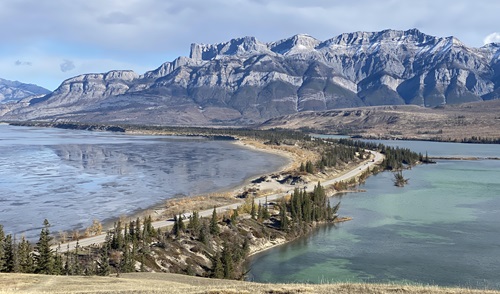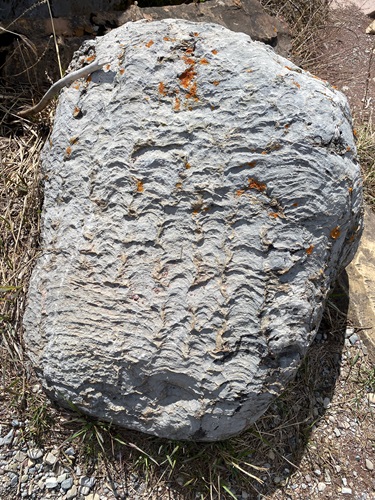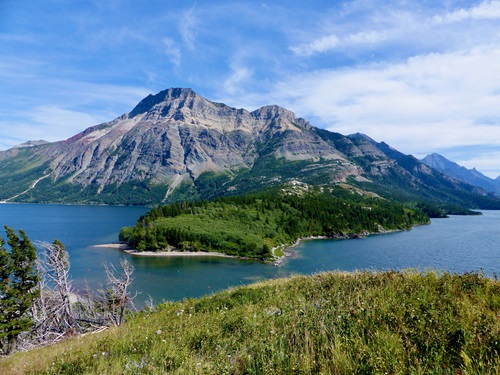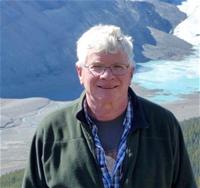Past Their Peak: The Changing Landscape of Alberta’s Rocky Mountains
Indigenous hunters pursuing roaming buffalo. Adventurous mountaineers chasing a jagged skyline. Earth scientists seeking answers to Alberta’s majestic geology.
Since the end of the last ice age, the Alberta Rockies have enticed humans to travel their rugged landscape. But for a century of prospectors, the draw of the mountains involved something more chilling: madness, murder, and the Lost Lemon Gold Mine.
A quest becomes a curse
Rumours have swirled since the late 1800s of a wealth of gold discovered, then lost, on the eastern slopes of the Alberta Rockies. According to one version of the legend, two prospectors—Frank Lemon and a man known only as Blackjack—found a deposit of gold near Crowsnest Pass.
A furious argument between the two erupted: would they stay and mine as much as they could carry, or would they return in better weather with more supplies? Lemon won the fight, quite literally—he killed the sleeping Blackjack that night with an axe.
The assassination set into motion a dark chain of events.
Upon his return home, Lemon confessed the murder to a priest, who kept the gold a secret but sent a man to properly bury Blackjack. That man died of alcohol poisoning before he could lead a party of prospectors back to the location, and Lemon himself would never return to the spot: haunted by his murdered friend, he descended into madness. Devastating fires, severe illnesses, and mysterious deaths plagued future expeditions.
The legend spurred gold rushes in 1931 and 1988—neither of which found anything substantial—and the intrigue remains.

Laying a legend to rest
“There’s virtually no gold in the eastern slopes of the Rocky Mountains,” clarifies professional geologist Dale Leckie. He holds a master’s in geography and a doctorate in geology, and he has been studying natural history for nearly 50 years. While working at the Geological Survey of Canada in the early 1990s, he travelled to the Rocky Mountain Foothills with a fellow professor to hunt for gold-bearing sediments.
While they did find some gold, it failed to echo the fable's grandeur. “There’s one interval of ancient, cemented river gravels, and there is gold in there. It’s not a lot of gold—it’s probably less than the amount of gold we have in Edmonton in the North Saskatchewan River Valley. You can get it by collecting weathered debris from the bases of cliffs, putting it in a bag, and taking it down to the river and panning it.”
Their typical haul? About five to 20 flecks of gold, with single flecks measuring up to just a little larger than a grain of table salt. “I think if there was ever any merit or truth to the Lost Lemon Gold Mine, it would be where these gravels occur.” They originated in east-central British Columbia—the site of the Cariboo gold rush in the mid- to late 1800s—making it feasible large rivers ferried more than just rock eastward.
For now, the presence of gold in the Rocky Mountains—though scarce—is the only proven piece of the mad story.

A mountain of meaning
Of course, the Rockies provide much more than a backdrop for tall tales. Their glaciers and snowpack fill river basins that provide fresh water to much of Western Canada. They host a wide range of ecosystems and pack a punch of biodiversity under each peak. They preserve traces of ancient life forms that etch the history of our province.
Old enough to have made a mammoth impact on Alberta, their earliest rocks coexisted with a wide assortment of planetary affairs. Fish evolved, North America drifted around the globe, and the Earth suffered multiple mass extinctions—the worst of which eradicated about 75 per cent of the planet’s species. Dinosaurs rumbled into existence and were snuffed out. The moon, closer to the Earth than it is today, roused large, powerful tidal waves before beginning its lunar retreat.
Alberta’s oldest mountains surged amid the chaos, in Waterton Lakes National Park. At 1.5 billion years old, they’re more than one billion years older than those in Banff and Jasper national parks. Evidence they rose from an ancient sea floor includes the fossilized, primitive algae that collected into vertical colonies called stromatolites and ascended with the growing mountains. “A lot of the cliffs in Waterton Lakes National Park are the result of the accumulation of those algae,” Leckie explains. “If you cut a cabbage in half lengthwise, that’s exactly what these stromatolites look like.”

The Earth's canvas
Astonishingly, the Rockies you see today are not only the result of many, many lifetimes of geological construction—they are the signature of extensive erosion. Mountain building in the eastern Rockies ended about 60 million to 65 million years ago, and the destructive forces of weather, glaciers, and rivers have been carving their dominating presence ever since.
“We see the spectacular cliffs in the Rocky Mountains because they’re usually limestones—carbonates, dolomites—that resist erosion, and that gives us those really phenomenal steep and high peaks. Whereas in the valleys, it’s quite often softer or younger rocks, which are more easily eroded.”
This destruction will eventually smooth the Rockies into round, rolling hills of varying elevation, similar to the Appalachians, Leckie says, but likely not for hundreds of millions of years.

Westward ho
Mountain building continues, though not in Alberta. It has shifted to Canada’s West Coast, just off Vancouver Island and Haida Gwaii, where three tectonic plates are grinding together and overlapping. Meanwhile, the Rockies continue their gradual deconstruction. One day, they may cease to exist as the indominable vistas we know them as—but their legend will only grow wilder, as legends often do.
Featured in this article

Dale Leckie, P.Geol.
Old Rock Day
January 7 is Old Rock Day, a day to learn about and celebrate old rocks and fossils, which tell us so much about the history of life on earth.
